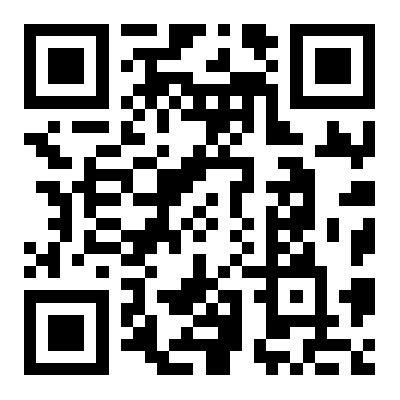Remote control of cold storage units
emote control of cold storage units refers to the ability to monitor, adjust, and manage cold storage equipment (compressors, fans, temperature controllers, etc.) remotely via digital technologies such as the Internet of Things (IoT), cloud platforms, and mobile networks. This technology has become a key part of modern cold chain management, offering enhanced efficiency, reliability, and cost savings. Below is a detailed overview of its core components, functions, technologies, and benefits:
A typical remote control system for cold storage units consists of three key layers:
Sensing & Execution Layer (On-site Hardware)
- Sensors: Collect real-time data such as temperature, humidity, pressure (e.g., refrigerant pressure), power consumption, and door status (open/closed). Common types include thermistors, humidity sensors, and contactless door sensors.
- Controllers: PLCs (Programmable Logic Controllers) or IoT controllers that process sensor data, execute commands (e.g., adjusting compressor speed, turning fans on/off), and connect to the communication layer.
- Actuators: Devices that respond to control signals, such as variable frequency drives (VFDs) for compressors, solenoid valves for refrigerant flow, and alarm buzzers.
Communication Layer
- Transmits data between on-site equipment and the remote platform using wired or wireless technologies:
- Wireless: 4G/5G (for high-speed, large-data transmission), Wi-Fi (for short-range, high-bandwidth needs), LoRa/NB-IoT (for low-power, long-range communication in remote areas), or Bluetooth (for local debugging).
- Wired: Ethernet (for stable, high-speed connections in fixed facilities) or RS485 (for short-distance, low-cost data transfer).
Remote Monitoring & Management Layer (Software Platform)
- Cloud Platform/Server: Stores and processes data, supports multi-user access, and runs analytics algorithms. Examples include AWS IoT Core, Azure IoT Hub, or custom industrial SCADA (Supervisory Control and Data Acquisition) systems.
- User Interface: Web portals, mobile apps (iOS/Android), or desktop software for users to view real-time status, set parameters, and receive alerts.
Real-Time Monitoring
- Track critical metrics (temperature, humidity, power usage, equipment runtime) on a dashboard, with visualizations (graphs, heat maps) for easy analysis. Users can check data from anywhere, 24/7.
Remote Parameter Adjustment
- Modify settings such as target temperature, humidity thresholds, compressor startup/shutdown parameters, or defrost cycles via the remote platform. For example, a manager can lower the set temperature remotely if a cold storage unit is warmer than required, without on-site visits.
Automated Alerts & Notifications
- Trigger instant alerts (via SMS, app push, email, or phone calls) when anomalies occur:
- Temperature/humidity deviations from set ranges (e.g., +2°C above the target).
- Equipment failures (e.g., compressor overload, fan malfunction).
- Power outages, refrigerant leaks, or unauthorized door openings.
Historical Data & Reporting
- Logs data over time (e.g., hourly temperature trends, daily energy consumption) to generate compliance reports (critical for industries like pharmaceuticals, which require GSP/GMP compliance) or identify inefficiencies (e.g., peak energy usage times).
Remote Diagnostics & Troubleshooting
- Technicians can access real-time error codes and operational data remotely to diagnose issues (e.g., a drop in refrigerant pressure indicating a leak) without dispatching a team, reducing downtime.
Energy Management
- Analyze power consumption patterns to optimize runtime (e.g., scheduling compressor operation during off-peak electricity hours) or adjust cooling output based on load (e.g., reducing capacity when the cold storage is partially empty).
- IoT (Internet of Things): Connects dispersed cold storage units into a unified network, enabling seamless data flow.
- Cloud Computing: Provides scalable storage and processing power for large volumes of real-time and historical data.
- Edge Computing: Processes data locally (e.g., on-site controllers) to reduce latency, critical for time-sensitive adjustments (e.g., preventing sudden temperature spikes).
- Encryption & Cybersecurity: Protects data transmission and prevents unauthorized access, especially important for sensitive industries (e.g., food safety, pharmaceuticals).
Enhanced Operational Efficiency
- Eliminates the need for on-site manual checks, reducing labor costs by 30-50% (e.g., for multi-site cold chain networks).
- Enables proactive adjustments (e.g., pre-cooling before new goods arrive) to avoid temperature fluctuations.
Reduced Product Loss
- Instant alerts allow rapid response to temperature deviations, minimizing spoilage of perishables (e.g., fruits, vaccines) — critical for industries where product loss can exceed 10% without real-time monitoring.
Lower Energy Consumption
- Data-driven optimization (e.g., adjusting compressor load based on real-time demand) can reduce energy usage by 15-25%, lowering operational costs.
Improved Compliance & Traceability
- Automated logs and reports simplify audits for regulatory standards (e.g., FDA, WHO) by providing tamper-proof records of temperature and equipment performance.
Extended Equipment Lifespan
- Remote diagnostics identify early signs of wear (e.g., abnormal vibration in compressors) allowing timely maintenance, reducing breakdowns and extending equipment life by 20-30%.
- Initial Investment: Costs include sensors, controllers, communication modules, and platform subscriptions — typically offset by long-term savings (e.g., energy and labor costs) within 1-3 years.
- Network Reliability: Dependent on stable connectivity; backup systems (e.g., dual SIM cards for 4G/5G) are recommended in areas with poor signal.
- User Training: Staff need training to operate remote platforms and interpret data, ensuring effective use of the system.
In summary, remote control transforms cold storage management from reactive to proactive, offering unprecedented visibility and control over critical operations — a must for modern cold chain logistics, pharmaceuticals, and food storage industries.

